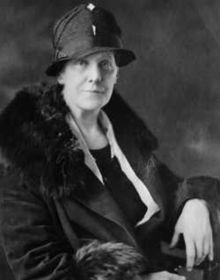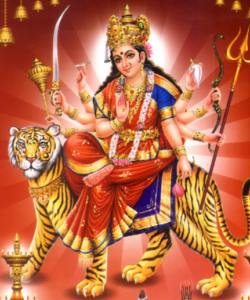
Mother’s Day
by Milan Riley and Jordin Lim
Mother’s Day is a celebration in honor of mothers, motherly figures, or those with whom we have maternal bonds, in addition to honoring the influence of mothers on society. It is celebrated on different days in over 40 countries, but most commonly in March or May. For the United States, it is scheduled on the second Sunday in May, which this year is Sunday, May 8, 2022.
The History of Mother’s Day
Celebrations of mothers occurred long ago by the ancient Greeks and Romans, who held festivals in honor of their mother goddesses. The Phrygians and those in ancient India also had festivals celebrating their goddesses. A more modern event that most likely inspired the making of Mother’s Day is the early Christian festival known as “Mothering Sunday.”
Mothering Sunday occurred on Sunday, March 27 this year. This tradition dates back to the United Kingdom and other parts of Europe, which had Mothering Sunday fall on the fourth Sunday in Lent. The time was to allow the faithful to return home to their “mother church” for a special service. This celebration helped inspire the idea of Mother’s Day and even merged with it in some areas around the 1930s and 1940s.

Medieval origins of Mothering Sunday
Now that we know the background for the idea, how did it actually arise? Ann Jarvis was a social activist and community organizer during the American Civil War era. Sadly, she died on May 9, 1905, but was not forgotten. One of her goals was to establish a holiday honoring mothers. Anna Jarvis, her daughter, accomplished this for her when she led the movement for the commemoration. Anna founded Mother’s Day when she held a memorial service for her late mother on May 12, 1907, in her church in Grafton, West Virginia. The celebration spread until, within five years, almost every state in the U.S. was observing the day. Finally, in 1914, President Woodrow Wilson made it a national holiday.

Anna Jarvis
However, some might be surprised to hear that Anna Jarvis actually tried to abolish the holiday that she herself started. Ms. Jarvis believed the event had become too commercialized. However, because the holiday is still celebrated today, she did not succeed in stopping Mother’s Day because too many people enjoy devoting a special day in honor of their mothers.
How Mother’s Day is Celebrated Around the World
United States: Tokens of Affections
In many U.S. households, Mother’s Day is celebrated with tokens of affection such as breakfast in bed, a bouquet of flowers, and homemade cards. Mother’s Day in the U.S. is also celebrated by giving mothers a day off from household chores or work.
India: 10-Day Festival
Each October, Hindus celebrate Durga Puja, a 10-day festival that honors the goddess of mothers, Durga.

Durga, the goddess of mothers
The puja is performed in homes and in public, the latter featuring a temporary stage and pandals, or structural decorations. The celebration is thought to date back back to the sixteenth century, considered to be both a religious ceremony and a time for family reunions. According to Hindu scriptures, the festival marks goddess Durga’s victory over the shape-shifting asura (power-seeking spiritual beings in Indic religions), Mahishasura. Therefore, the celebration embodies the victory of good over evil, whilst being a festival celebrating the goddess Durga as the motherly power behind all life and creation
Japan: The Right Flowers
After World War II, Mother’s Day in Japan became a way to comfort mothers who had lost sons due to the war. Carnations will be presented around this holiday, symbolizing the sweetness and endurance of motherhood in Japanese culture. Children would give red carnations if their mother was alive, but would display white carnations if their mother had passed away. Japanese Mother’s Day gifts include kanji (calligraphy art) prints, lacquer jewelry boxes, kokeshi dolls, and food (consisting of oyakodon, chawanmushi, and tamagoyaki).

Kokeshi doll
Ethiopia: Singing, Dancing, and Cooking
At the end of the rainy season in the fall, the 3-day feast of the Antrosht festival is dedicated to mothers. As the weather clears, family members come together to their homes for a large meal and celebration, preparing “hash,” the traditional recipe of the country. Traditionally, daughters bring vegetables and cheese while sons bring the meat. With these ingredients, hash is prepared, with singing and performing dances that tell stories of family heroes.

The Antrosht Festival
Denmark: Mors Dag
The first Mother’s Day in Denmark was celebrated on Sunday the 12th of May, 1929. The idea of Mother’s Day came from America, brought to Denmark by Christian Svenningsen. The original intention of this celebration was to collect money for war widows and mothers who had lost their sons during World War I. Mors Dag (as Mother’s Day is called in Denmark) is all about flowers, as it has become a tradition to buy your mother a bouquet of flowers. Some invite their mothers out for lunch or dinner. For children that still live at home, it is tradition that the child prepares the breakfast and serves the breakfast together with a homemade card and flower.

A bouquet of flowers
Philippines: Great Respect
In the Philippines, children and fathers spend the whole day pampering their mothers and showing off their love to them. Mother’s Day in the Philippines is considered a token of showing gratitude to the immeasurable sacrifices mothers make for their families. Children in the country denote their mother by “ilaw ng tahanan”, meaning the light of the house. Mother’s Day is extraordinarily respected, and is therefore celebrated throughout the country with utmost zeal. The people in the Philippines don’t only celebrate their mothers, but for their grandmothers, cousins, aunts, and every other female member in the family. Children make cards for their mothers, while some arrange breakfast in bed for their mothers. Husbands also give gifts to their wives, or take their wives to a trip or a day of relaxation. The day begins with hearing Mass in the morning, thereafter presenting to the moms with a delicious lunch at one of their favorite restaurants.

“Thank you Mom” in Filipino



